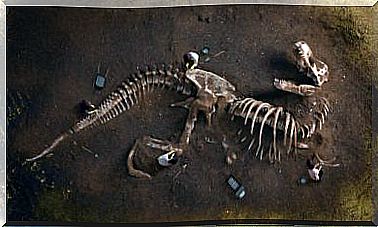Can Pets Get Alzheimer’s?

Alzheimer’s is a neurological disease whose main risk group is the human population over 65 years of age. However, scientists say this pathology can also affect the animal kingdom. Check out several symptoms that help detect it.
The first main symptoms in the diagnosis of Alzheimer’s are memory loss, emotional problems and reasoning difficulties, which usually evolve with advancing age until reaching the state of dementia.
Cognitive decline is associated with the formation of plaques and tangles of two fibrous proteins, beta-amylide peptide and tau protein, in the brain. However, it is still being investigated whether these structures are the focus of the disease or the result of a larger process.
Until now, animals had played a key role both in the development of scientific models that would help to understand the disease, and in the therapy of those affected themselves. However, in recent years, several wild animals have come to be studied.
New discoveries about Alzheimer’s in animals
Two years ago, several discoveries related to brain deterioration in animals changed the course of research into Alzheimer’s. It was in August 2017 that a group of scientists from Kent State University (USA) detected signs of the disease in chimpanzees.

The credibility of the study was based on the fact that the first time you worked with brain samples from primates who died in the 90’s brains, the National Chimpanzee Brain Resource , had a higher amount of fibrous protein plaques higher was the degree of aging of the animal. So the analogy with the human species was shown.
Later, in October of that same year, another study published in the journal Alzheimer’s & Dementia revealed that it had found traces of the disease in wild dolphins. These animals, like killer whales and humans, have a long life span that goes beyond their fertile stage.
This possibility of achieving longevity was what motivated a group of scientists at the University of Oxford (United Kingdom) to study the predisposition of cetaceans to contract Alzheimer’s.
In their research, they analyzed the brains of dead dolphins that were washed ashore by the Spanish tide. In them, they found the characteristic fibrous protein formations of the disease, which, associated with old age, would have led to natural death.
However, it should be noted that the conclusions reached in both experiments lack data on the symptoms that these animals might have exhibited in life. Therefore, your dementia cannot be fully confirmed.
Dementia in dogs and cats
Although the presence of Alzheimer’s has not been confirmed, these animals are likely to have a similar pathology, perhaps a result of the previous one, known as cognitive dementia.

Among the studies that show a tendency to contract the disease, one carried out by the University of California-Berkeley stands out. In it, 62% of the dogs analyzed, aged between 11 and 16 years, had one or more symptoms of dementia:
Some of the more common signs of this condition, known in dogs as canine cognitive dysfunction (CCD), are:
- Changes in the sleep cycle : the animal sleeps more hours during the day and may wake up at night.
- Lack of interaction with the owner or other animals. The animal’s behavior stands out for its inactivity and lack of motivation.
- Lack of appetite.
- Urinary or fecal incontinence.
Due to these symptoms, it is ideal to consult the veterinarian, especially if they occur at an early age. However, general advice in a normal physiological state is to encourage exercise, encourage play, socialize with other people or pets, and take good care of your diet.









